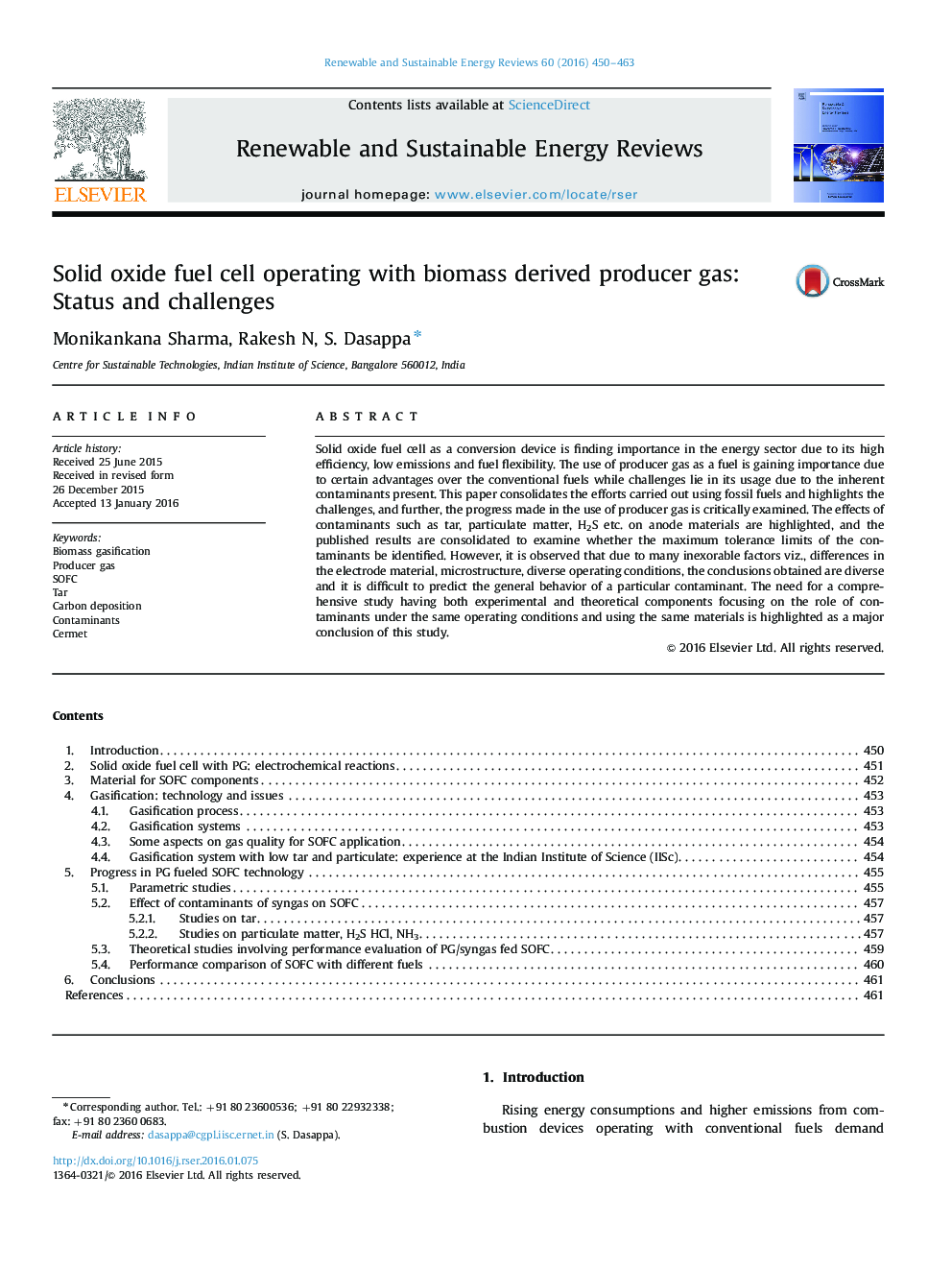| Article ID | Journal | Published Year | Pages | File Type |
|---|---|---|---|---|
| 8113915 | Renewable and Sustainable Energy Reviews | 2016 | 14 Pages |
Abstract
Solid oxide fuel cell as a conversion device is finding importance in the energy sector due to its high efficiency, low emissions and fuel flexibility. The use of producer gas as a fuel is gaining importance due to certain advantages over the conventional fuels while challenges lie in its usage due to the inherent contaminants present. This paper consolidates the efforts carried out using fossil fuels and highlights the challenges, and further, the progress made in the use of producer gas is critically examined. The effects of contaminants such as tar, particulate matter, H2S etc. on anode materials are highlighted, and the published results are consolidated to examine whether the maximum tolerance limits of the contaminants be identified. However, it is observed that due to many inexorable factors viz., differences in the electrode material, microstructure, diverse operating conditions, the conclusions obtained are diverse and it is difficult to predict the general behavior of a particular contaminant. The need for a comprehensive study having both experimental and theoretical components focusing on the role of contaminants under the same operating conditions and using the same materials is highlighted as a major conclusion of this study.
Related Topics
Physical Sciences and Engineering
Energy
Renewable Energy, Sustainability and the Environment
Authors
Monikankana Sharma, Rakesh N, S. Dasappa,
